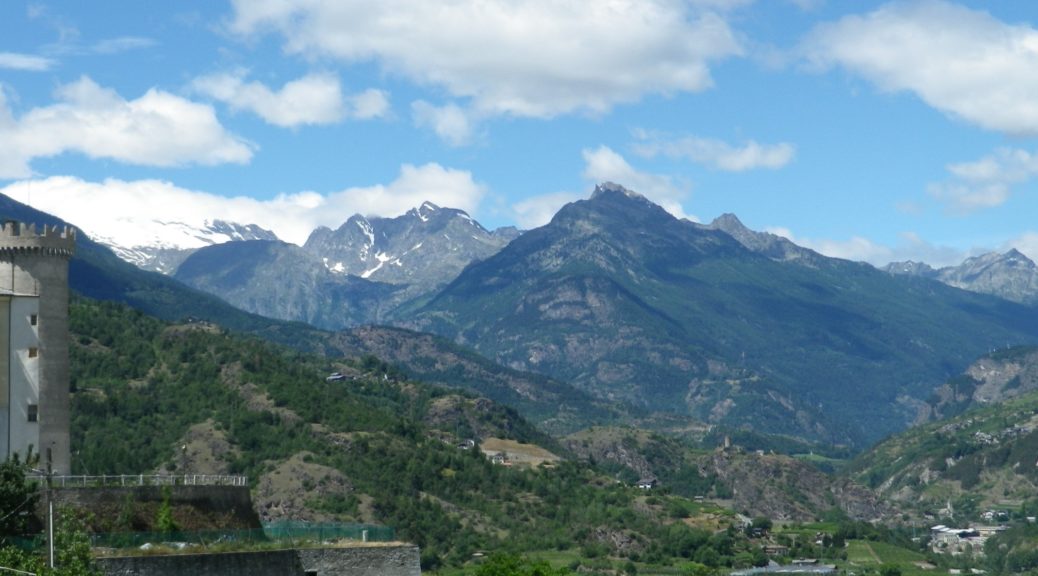Recently, I visited a quiet corner of Italy. That is almost a contradiction of terms nowadays, and often difficult to find in the summer. Seeking a refuge in the great outdoors, free from crowds, I came across a bike ride through vineyards in Aosta Valley. Since I had never been there, I decided to make the trip. What a trove of new discoveries of all sorts!
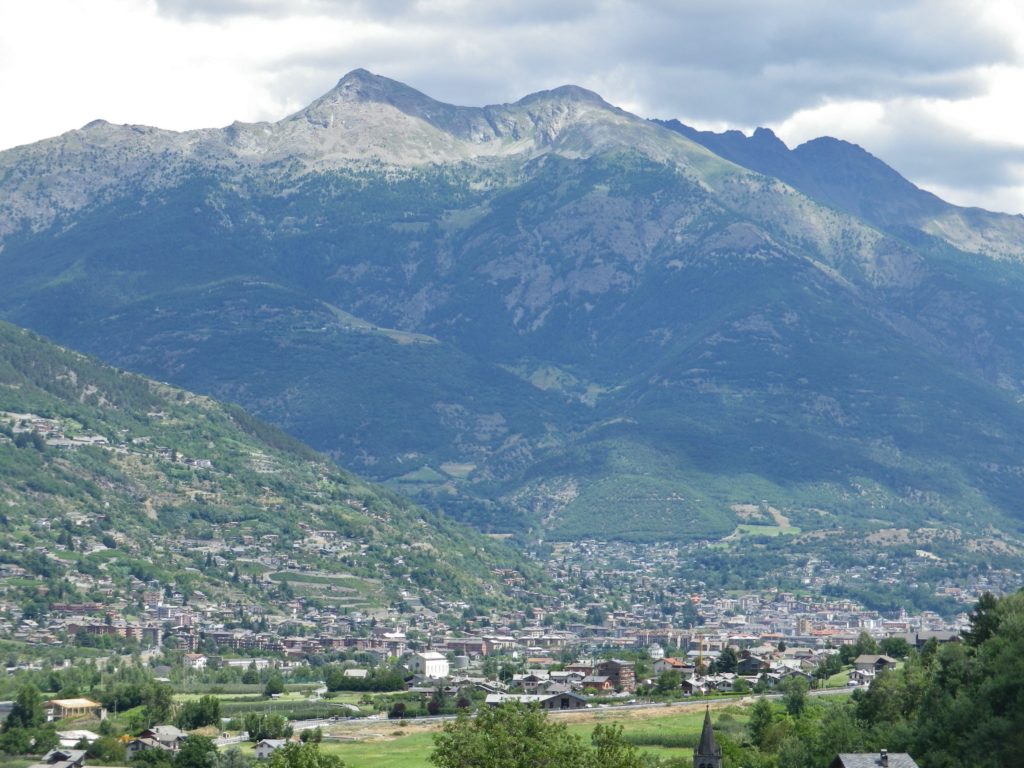
In the first place, the culture is an intriguing mix of French and Italian. Secondly, nature puts on an incredible display of the compelling and pristine: from dramatic Alpine peaks, to well-preserved meadows, to clear, roaring streams. Then, there was the food, and of course the wines.
Personally, I had never seen, or seen offered, a bottle of Aostan wine. But this bike trail was designed to rectify that. There was a clear nexus between the trail design and promotion and the local wine cooperative, the Cave des Onze Communes, in the heart of Aymavilles, a small town clinging to a mountainside, dominated by a castle and surrounded by vines.
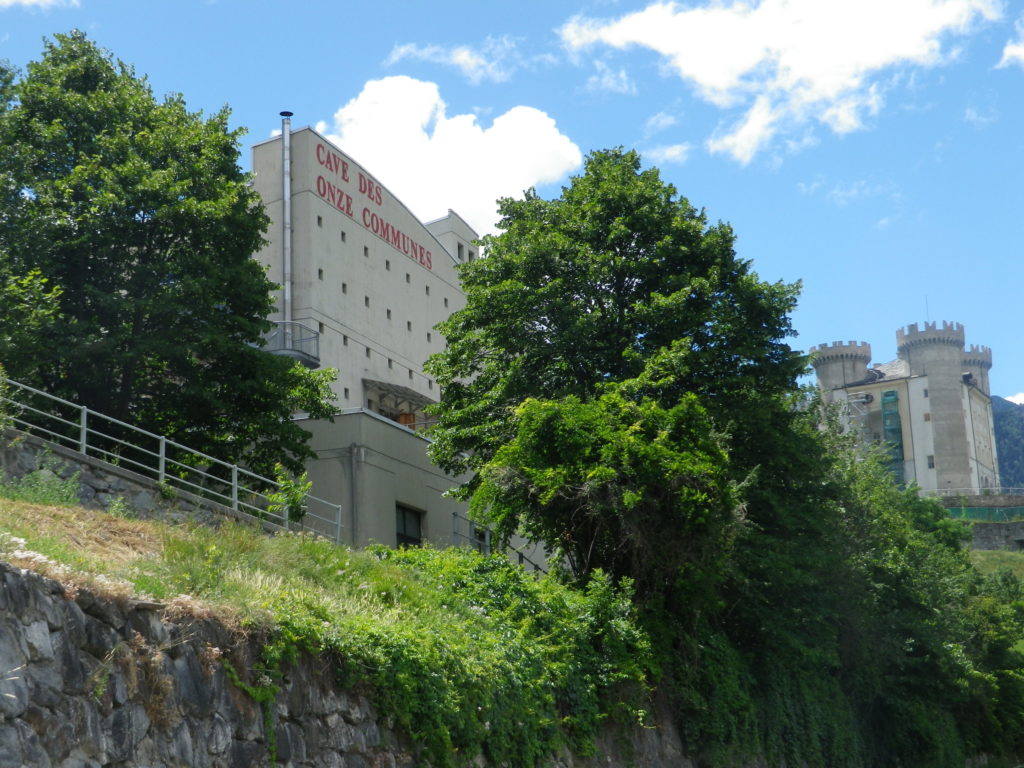
The trail, almost entirely on very low-density/lightly-trafficked roads, either starts at the winery, or starts near it. There are actually six short segments of trail, three of which radiate from or near the winery. From there, where, and how far to go, is up to the rider.
To lengthen the ride, follow any or all of three other trails which extend from the original three. Circuits and loops may be created, and backtracking to the start is always possible, and in fact mandatory in places. However, at most there are only six miles or so of itinerary to follow, making this ideal for a quick ride.
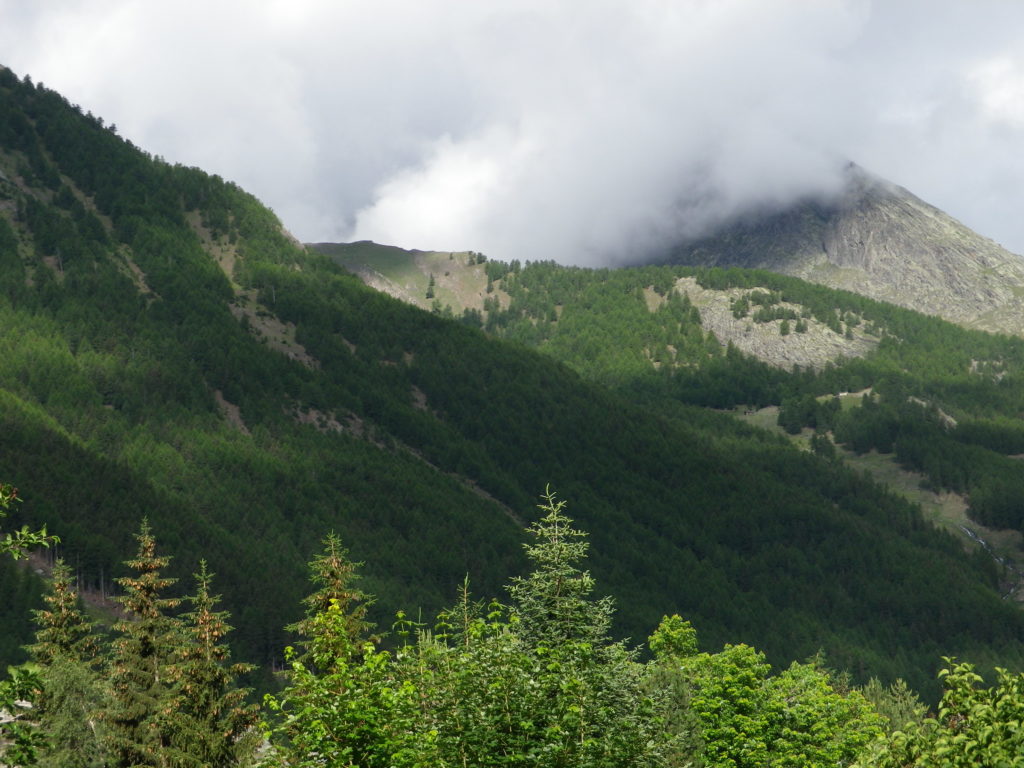
The views are the feature of this trail high in the Alps. Mont Blanc, still topped with snow in July, is visible along part of the way, as is Aosta, the capital city of this region, in the opposite direction, further down the valley. As the trail passes through vineyards, it affords views of the vineyards on the other side of the valley. A seeming mirror image of the vineyards through which I cycled, these began low, and rose in a very irregular patchwork of vines to surprising heights on the mountains opposite. Above the vineyards were (mostly) pines, and above the tree line, rocky crags pierced the sky, in a brilliant blue on white contrast. Alternatively, those peaks would occasionally snag a cloud, and remained wreathed for a while in a soft white puff.
Castles were visible now and again, barely registering against the backdrop of such massive mountains. This area was conquered and held by many, from Romans to the House of Savoy, before joining the newly formed Italy in the mid-nineteenth century. However the old churches and houses, with steep rooves and deep overhangs, recall that the worst enemy in this part was, and still can be, the weather.
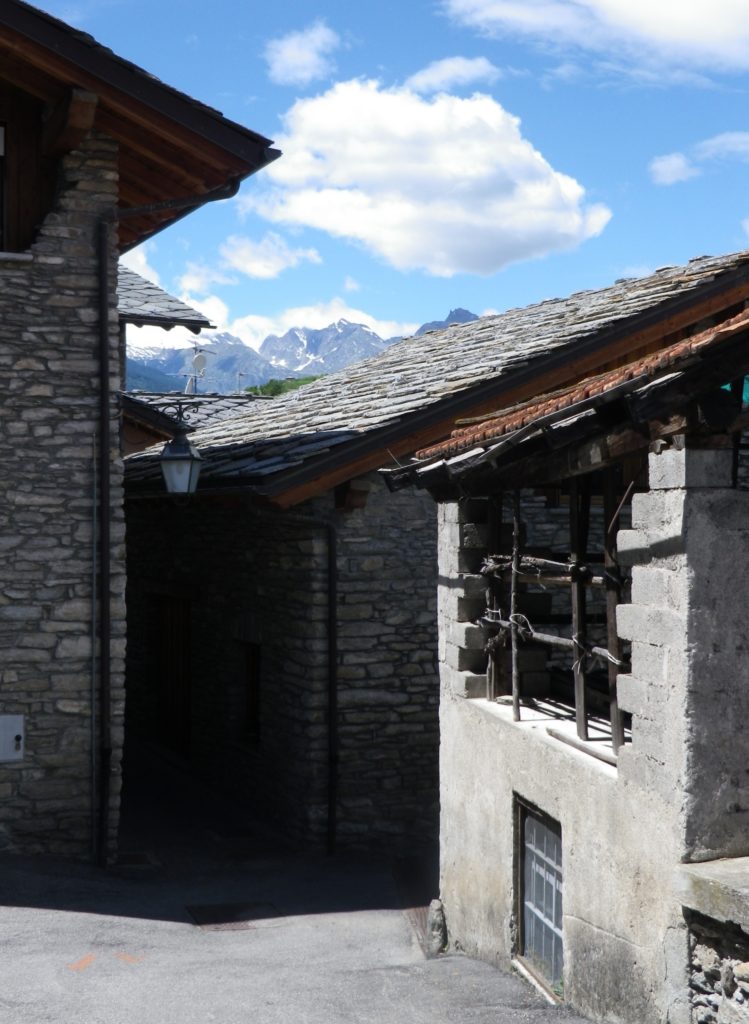
Once back at the winery though, I learned that this area boasts a fair number of unique local grape varieties, which do well in cold weather, and are more frost-resistant than most. What is more, the varietal wines from the cooperative are delicious, smooth, and quite reasonably priced. Unique grapes and different wines: the best discovery of all!
